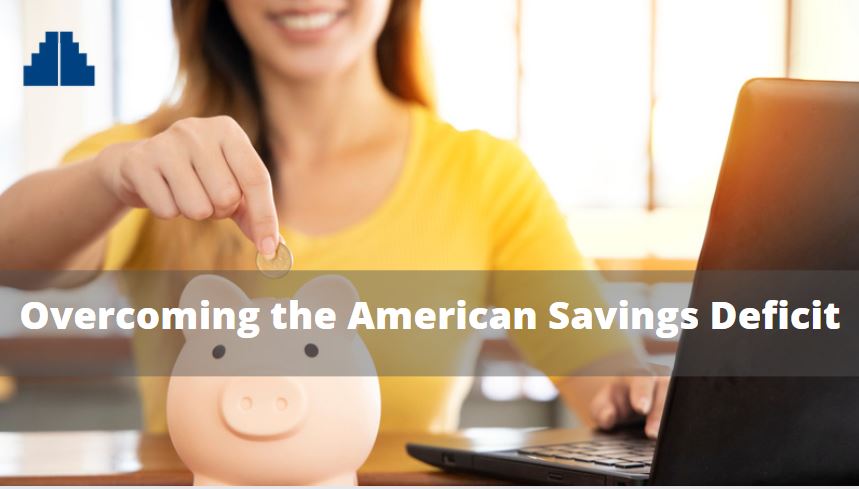
Overcoming the American Savings Deficit
Nearly 60% of Americans don’t have enough money saved to take care of an unplanned expense. In fact, according to the Federal Reserve, it’s not just the large unplanned expenses, like medical bills, etc. Four in ten adults said they would not have the money to cover a $400 expense.
Take a look at your savings account. If you were hit with an unexpected cost of $500 to $1000, would you be able to weather the storm without using credit cards or borrowing the money from another source, using only your savings?
If not, you’re not alone, according to a recent study. Surprisingly enough, Millennials were the most prepared. 47% of those aged 18-29 said they would use savings to cover an unplanned expense.
Savings rates aren’t exactly helping the situation either. There is a 60-year downward trend in the personal savings rate — as opposed to when, in the 1970s, the savings rate in the United States was in the double digits. But more recent figures from the U.S. Bureau of Labor Statistics put it at 6%, the lowest level since the 2008 financial crisis. [4]
Carol Kaplan, a spokeswoman for America Saves says, “Life is full of unexpected financial emergencies. Having a savings cushion relieves a lot of that stress and protects us financially.”
Putting together that savings cushion may seem unrealistic to some, especially if you’re already behind, living paycheck to paycheck, but it is achievable. All that needs to happen is a changing of habits and a shift in priorities.
The first step to building your emergency fund is to set a reachable savings goal. Start with $50 if you need to start with a number that low. The point is not so much the amount, like the fact that it should be achievable for you and your specific financial situation.
The trick is to not have to earn extra money, but rather find the savings in the money you’re already spending. For example, take a look at your credit card payments. Is there a way to reduce your rates? Turn over your credit card and call the number on the back. A simple request to get a rate reduction might result in a pleasant surprise.
There are many ways to shave off extraneous expenditure. Shopping around for better insurance policies can save you money. So can installing a programmable thermostat, planning your grocery shopping instead of just wandering around the aisles picking up random, unnecessary items.
Try reducing your number of dinners out per month. You’d be surprised at how much you spend on restaurants. Saving money on gas is easy if you have a colleague who lives close by and is willing to carpool or by the use of public transport.
Ask yourself, “How often do I watch Netflix? Cable?” Find those monthly bills that you’re paying but not using. Is there a better cell phone plan you could be on?
Before you know it, that $50 will be easily available to you and ready to be stored away in your emergency fund account.
In a few months, you’ll hit your first goal of say, $500 or $1000. Now set another goal, maybe double the amount. And keep going until you can reach a goal of having an entire month’s worth of expenses sitting in your account. Then two months, three months, and so on.
If and when an emergency does happen, you’ll be able to sleep at night, knowing that you planned ahead and can continue living your life undisrupted.
IMPORTANT DISCLOSURES
Material contained in this article is provided for information purposes only and is not intended to be used in connection with the evaluation of any investments offered by David Lerner Associates, Inc. This material does not constitute an offer or recommendation to buy or sell securities and should not be considered in connection with the purchase or sale of securities.
To the extent that this material concerns tax matters, it is not intended or written to be used, and cannot be used, by a taxpayer for the purpose of avoiding penalties that may be imposed by law. Each taxpayer should seek independent advice from a tax professional based on his or her individual circumstances.
These materials are provided for general information and educational purposes based upon publicly available information from sources believed to be reliable– we cannot assure the accuracy or completeness of these materials. The information in these materials may change at any time and without notice.
David Lerner Associates does not provide tax or legal advice. The information presented here is not specific to any individual's personal circumstances. Member FINRA & SIPC

